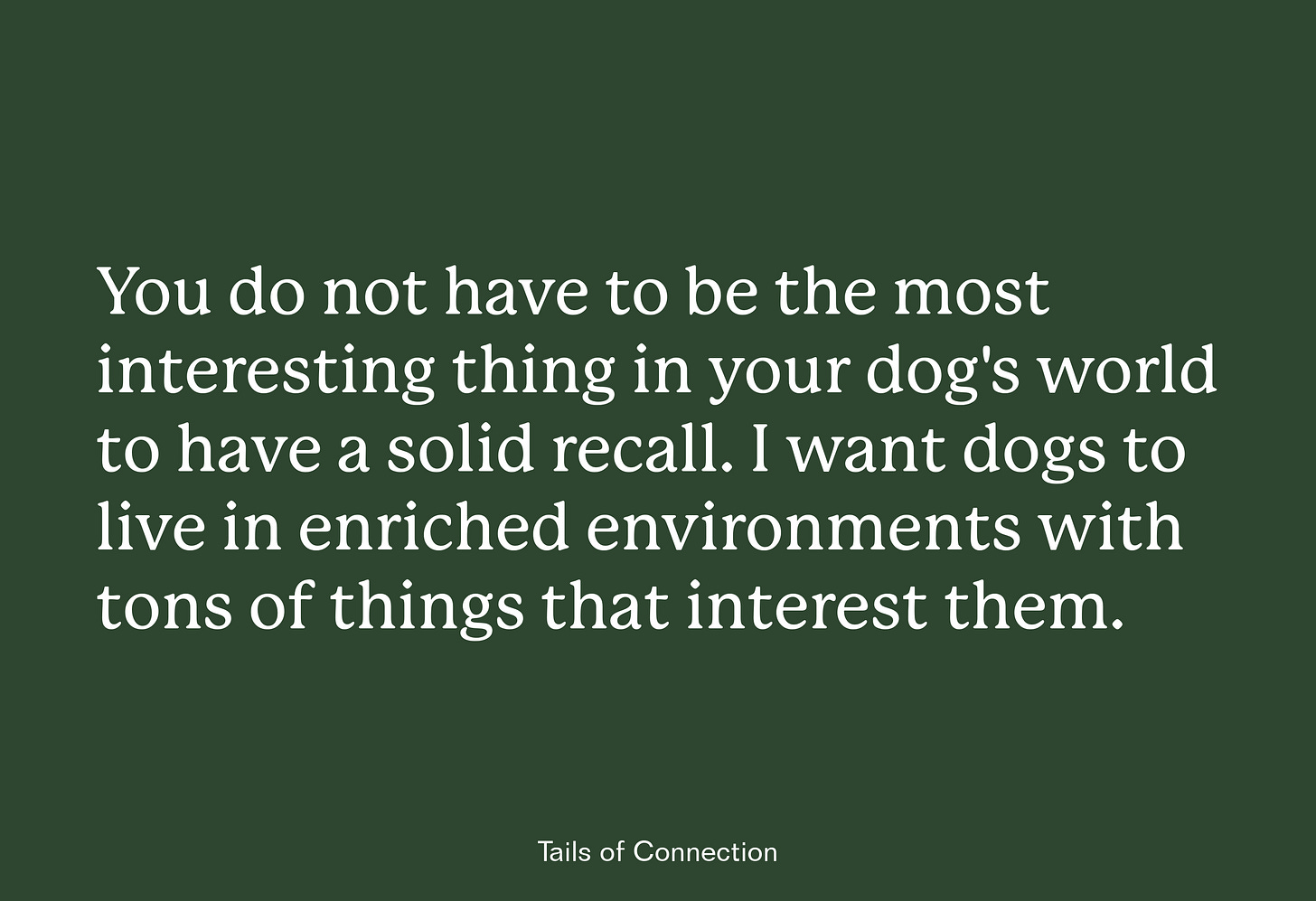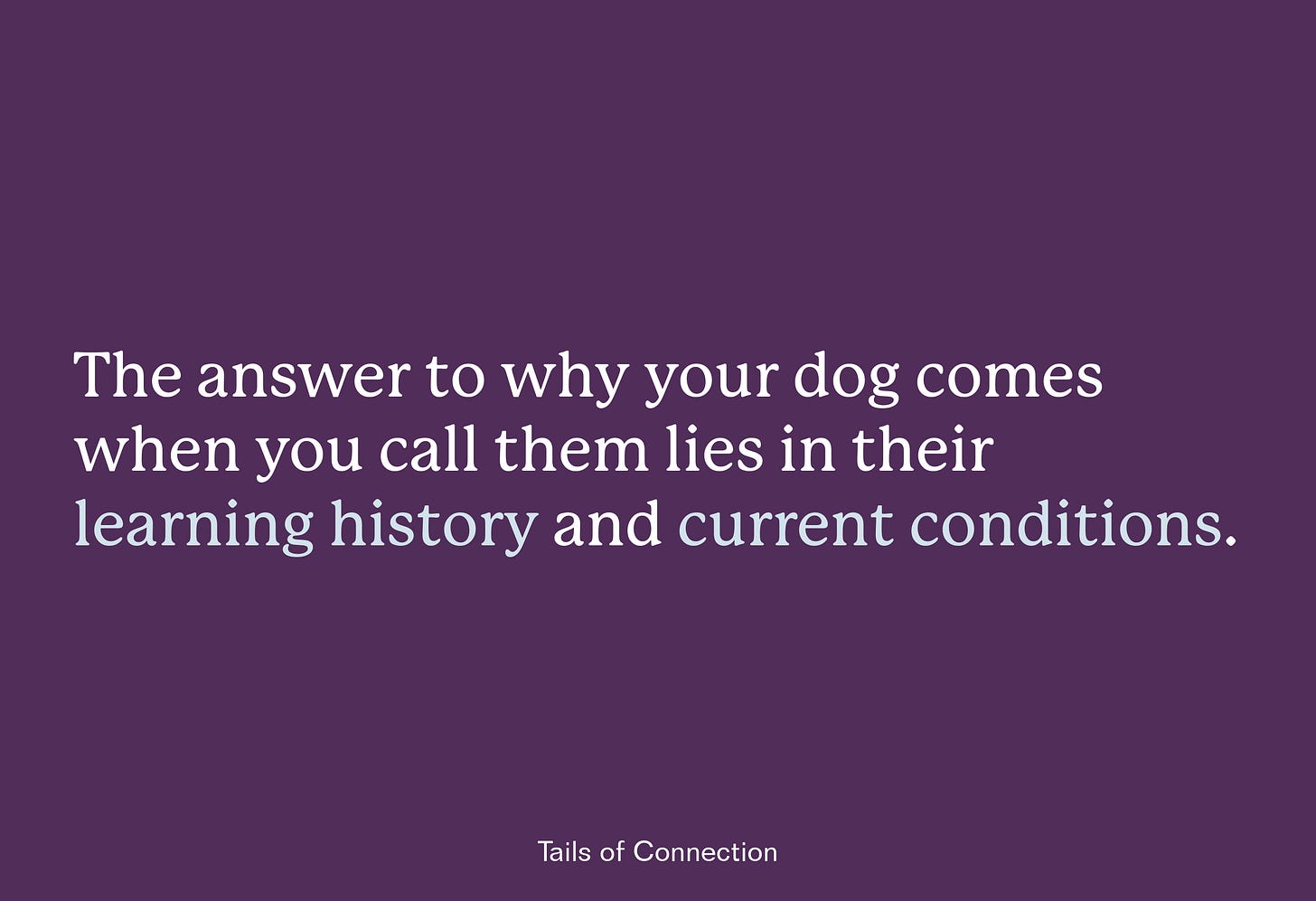The Recall Guide Primer: Why Dogs Come (or Don’t) When Called (Part Two)
Why does your dog come running one day and ignore you the next? In Part Two of our Recall Primer, we dig into the “why” behind recall—and how to make it stronger (and more fun).
Last week we released part one of our TOC Recall Guide Series with the first installment entitled, “The Recall Guide Primer: There’s No Such Thing As Perfect Recall (Part One).” This week we are so excited to bring you the second part of that primer which delves into many of the reasons why your dog may or may not come to you when you call them.
But before we begin with Part Two of the Primer, here’s a reminder of how the TOC Recall Guide is broken out and how to use it: :
Recall Primer (Part One and Two): Part One of the primer covers the idea of “perfect recalls” and what recall really is. In Part Two of the primer (this article), we go over why your dog might come (or not) when you call them. I recommend reading the primer before moving onto the Activity Guide.
Recall Activity Guide: Next, head over to the Recall Activity Guide (coming soon!), where you will find so many (SO MANY) activities to start building or progressing your dog’s recall. Plus, these activities are just plain fun. This is meant to be easily navigable and something that you can come back to time and time again.
Why does your dog come when you call them?
Have you ever heard somebody tell you that you have to be the most interesting thing in your dog’s world? I have (good) news for you: you do not. I want dogs to live in enriched environments with tons of things that interest them. I can trust that my dog and I have a good relationship without needing to be the single most interesting thing in their world at all times. Plus, while your dog loving you is deeply meaningful, it’s an insufficient explanation for behavior.
The answer to why your dog comes when you call them lies in their learning history (reinforcement history) and current conditions. Put (perhaps too) simply: the strongest recalls are the ones that have the biggest, best, and most predictable reinforcement histories. If you want your dog to come when called, coming when called better reliably produce AWESOME outcomes for your dog (over and over and over again).
The strength of your cue and your dog’s behavior are both tied to their relation to the consequence that follows. When you say “come,” it signals to your dog that if they perform a specific behavior (“run to you”), then a specific consequence will occur (e.g. you will toss a treat). This if-then “dependency” is called a contingency. Cues (like the word “come”) signal to your dog what contingency is in play.
You want “come” to be a very strong predictor that desired reinforcers are now available contingent on running to you.
While past reinforcement is what drives future behavior, we cannot ignore conditions. To have a solid recall, your dog has to learn to perform the sequence of recall behaviors under a HUGE variety of conditions. And this doesn’t happen by accident. Recalling your dog in your living room is simply not the same as recalling your dog away from a group of dogs.
Watch this video to see just how powerful seemingly small antecedent changes can be. Then think about how vastly different the conditions can be when you recall your dog. (And in case your brain gets hung up on the fact that I gave treats for “mistakes,” here’s why I did that in the video.)
Remember the good news? You don’t have to convince your dog that other dogs are boring in order to recall them around dogs. You just need to get the recall behavior to show up in those conditions, and this is something we can do systematically – we can transfer the behavior to more and more conditions. (Note: your dog having a big positive reinforcement (R+) history with you, meaning lots of good things happen with you, certainly matters!)
Here are some factors that likely contribute to your dog responding consistently by running to you when you call them:
Keep reading with a 7-day free trial
Subscribe to Tails of Connection's Substack to keep reading this post and get 7 days of free access to the full post archives.




